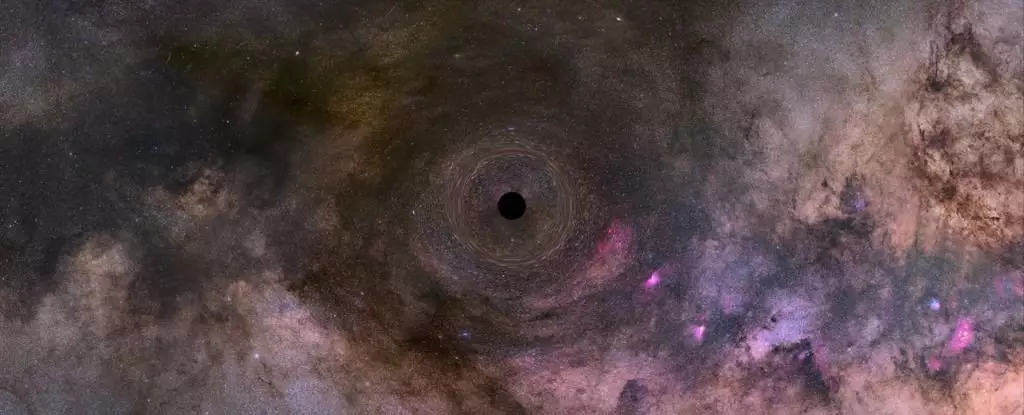In a groundbreaking revelation, astronomers have made an extraordinary discovery: a solitary black hole navigating the cosmos, which has been officially confirmed for the first time. This dark celestial body, approximately 7.15 times the mass of our Sun, resides about 4,958 light-years from Earth and streaks through the universe at roughly 51 kilometers per second. The significance of this finding extends beyond mere numbers; it marks the first verified instance of a lone black hole, a class of cosmic object traditionally paired with companions, predominantly stars. This unique identification opens a new chapter in our understanding of the universe and the elusive nature of these enigmatic entities.
How We Discovered the Solitary Black Hole
The journey to identify this solitary black hole is as captivating as the discovery itself. It first made its presence known in 2011, identified through two crucial astronomical surveys: the Optical Gravitational Lensing Experiment (OGLE) and Microlensing Observations in Astrophysics (MOA). These initiatives were designed to track gravitational microlensing events, where the intense gravitational field of a massive object distorts the light of a more distant background star. The black hole’s existence was inferred not through direct observation, which is nearly impossible for such entities, but rather through the peculiar warping of light it exerts as it passes through the cosmos.
To further substantiate the claims of a black hole, scientists enlisted the help of the Hubble Space Telescope, which conducted eight observations over six years, carefully measuring the extent of the light distortion. The collaboration drew from data collected by 16 different telescopes globally, combining photometry and spectroscopy to give a holistic view of the event. This extensive data pointed towards a solitary black hole, presenting it as a significant achievement in astronomical studies.
The Complexity of Confirmation
However, the path to confirmation was riddled with complexity and contention. A subsequent analysis in 2022, utilizing Hubble’s more comprehensive data, presented an alternative view. The researchers suggested that the object’s mass was likely between 1.6 and 4.4 solar masses, a range more characteristic of a neutron star than a black hole. This divergence raised eyebrows, as it commonly implied a more modest and less mysterious stellar remnant. Yet a series of follow-up studies reinforced the black hole hypothesis, leading to a reinvigorated inquiry that highlighted the relentless spirit of scientific investigation.
This latest analysis. in partnership with many of the original researchers, integrated additional Hubble observations extending the time frame to 11 years. By refining the mass approximation and synthesizing updated data from OGLE, the research team reaffirmed their original conclusion: the object is indeed a stellar-mass black hole.
Challenges of Observation
The observational challenges faced during this investigation illuminate the persistent intricacies inherent to studying such elusive cosmic phenomena. The light from a neighboring, much brighter star complicated the analysis significantly; astronomers had to meticulously subtract this overwhelming brightness from their observations. Furthermore, they had to account for environmental factors that could alter readings, showcasing the vast array of variables impacting the discipline of astrophysics.
Despite these challenges, researchers undertook extensive searches for any possible companions that must exist if the object were anything other than a solitary black hole. With a comprehensive exploration of the surrounding cosmic region, they ruled out any companions greater than 0.2 solar masses within a staggering 2,000 times the distance between Earth and the Sun.
The Implications of Discovering a Lone Black Hole
This discovery has profound implications for our understanding of the universe. While this may be the first formally acknowledged solitary black hole, it stands to reason that there are countless others traversing the cosmos, remaining hidden from view due to their solitary nature. As astronomers continue to refine their techniques for detecting these elusive entities, the cosmos is likely full of surprises that challenge our existing models of stellar evolution and the lifecycle of celestial objects.
The notion that black holes can exist in isolation raises questions about their formation, evolution, and the dynamics of the environments in which they reside.
This trailblazing revelation not only sets a precedent for future explorations into solitary black holes but also serves as a reminder of the ever-unfolding mysteries that the universe holds, beckoning us ever onward into the vast unknown.


Leave a Reply